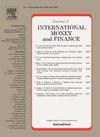回顾15年来不同寻常的跨大西洋货币政策
IF 3.3
2区 经济学
Q2 BUSINESS, FINANCE
引用次数: 0
摘要
为应对2008年的全球金融危机和2020年的新冠肺炎疫情,欧洲央行和美联储推出了新的政策工具,并对其业务框架进行了调整。我们通过建立和估计一个易于处理的两国动态随机一般均衡模型来研究这些货币政策演变对大西洋两岸的宏观经济影响。我们表明,欧元区和美国面临不同性质的冲击,解释了2008年至2023年期间的一些异步货币政策措施。然而,反事实分析强调,自2008年以来实施的所有常规和非常规政策都适当地(i)支持了经济增长,(ii)使这两个领域的通胀保持在正常水平。唯一的例外是对2021-2022年通胀飙升的滞后反应。此外,汇率冲击在塑造这两个经济体的总体货币状况方面发挥了重要作用。本文章由计算机程序翻译,如有差异,请以英文原文为准。
Revisiting 15 years of unusual transatlantic monetary policies
The European Central Bank and the Federal Reserve introduced new policy instruments and made changes to their operational frameworks to address the global financial crisis (2008) and the Covid-19 pandemic (2020). We study the macroeconomic effects of these monetary policy evolutions on both sides of the Atlantic Ocean by developing and estimating a tractable two-country dynamic stochastic general equilibrium model. We show that the euro area and the United States faced shocks of different natures, explaining some asynchronous monetary policy measures between 2008 and 2023. However, counterfactual exercises highlight that all conventional and unconventional policies implemented since 2008 have appropriately (i) supported economic growth and (ii) maintained inflation on track in both areas. The exception is the delayed reaction to the inflationary surge during 2021–2022. Furthermore, exchange rate shocks played a significant role in shaping the overall monetary conditions of the two economies.
求助全文
通过发布文献求助,成功后即可免费获取论文全文。
去求助
来源期刊

Journal of International Money and Finance
BUSINESS, FINANCE-
CiteScore
4.20
自引率
4.00%
发文量
141
期刊介绍:
Since its launch in 1982, Journal of International Money and Finance has built up a solid reputation as a high quality scholarly journal devoted to theoretical and empirical research in the fields of international monetary economics, international finance, and the rapidly developing overlap area between the two. Researchers in these areas, and financial market professionals too, pay attention to the articles that the journal publishes. Authors published in the journal are in the forefront of scholarly research on exchange rate behaviour, foreign exchange options, international capital markets, international monetary and fiscal policy, international transmission and related questions.
 求助内容:
求助内容: 应助结果提醒方式:
应助结果提醒方式:


